Every year brings a new colour trend. In 2023, it was viva magenta. In 2024, it was peach fuzz. This year, it’s mocha mousse.
While it’s tempting to jump on the latest trend, to build a sustainable wardrobe that flatters you for years to come, you need to know your colour season (the right colour palette for your skin tone).
The two fundamentals of fashion are colour and fit. Once you know your colour season, you might find pieces in the perfect colour that, unfortunately, don’t fit you right. That’s when you can pop into LookSmart and have one of our expert tailors make your clothes truly fit you. When you wear the right fit and colour, you’ll have a magnetic glow.
In this article, we are going to help you identify your colour season, introduce you to your palette, and provide some practical tips to help you look your best. Let’s start with the basics: what is a colour season?
What are colour seasons?
The concept of colour seasons isn’t new. The theory first originated from Swiss painter Johannes Itten in the early 1900s when he was working at the Bauhaus school of art. He noticed that his students instinctively chose colours that reflected their own natural colouring, and he began grouping people by the four seasons based on their skin tone, hair, and eyes.
Today, colour seasons still help style-conscious people understand what will complement their colouring and help them look naturally radiant.
The classic model has four seasons.
- Spring: Warm-toned, light and fresh; think peach, coral, and mint.
- Autumn: Warm-toned, rich and earthy think olive, rust, and mustard.
- Summer: Cool-toned, soft and muted; think rose, lavender, and powder blue.
- Winter: Cool-toned, bold and deep; think jewel tones, icy brights, and black.
As you can see, the first big distinction is the difference between the warm and cool tones.
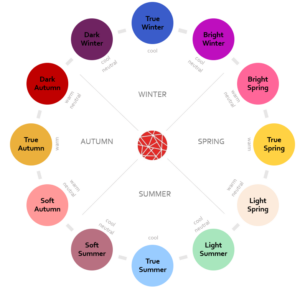
Once you understand the four basic seasons, you can dive into the 12 different variations based on brightness, softness, and depth.
The benefit of this is that you can pinpoint the exact colours that will work for you. Here are a few simple steps to help you find your true colour season.
How to find your colour season
In this section, we are going to help you identify the three things you need to identify your colour season. Make sure to note down your results so that you can find your season in Step 4.
Step 1: Determine your undertone
The first step to find your season is to pinpoint your undertone. A simple way to do this is to look at the veins on your wrist. If they are blue or purple, you are likely cool. If they are green, you are likely warm.
If you aren’t sure, try looking at how different colours interact with your skin.
- Do you prefer gold (warm) jewellery or silver (cool)?
- Hold a pure white top (cool) and a cream top (warm) next to your face – which flatters your skin more? (For example, one might make your under eyes look more tired or your skin dull.)
Lastly, think about how your skin reacts to the sun. If you burn, you likely have a cool undertone. While if you tan, you likely have a warm undertone.
Overview of undertone
- Warm: Has green veins, suits gold and cream, and will tan in the sun.
- Cool: Blue or purple veins, suits silver and pure white, and will burn in the sun.
Step 2: Understand your depth
Next, you’ll need to identify what your depth is. Depth refers to how light or dark your overall colouring is. You’ll be taking into consideration the combination of your skin, hair, and eyes.
There are three common depths: light, medium, and dark. When assessing your depth, determine if your colouring is mostly light (blonde hair, fair skin), medium (brown hair, medium skin), or dark (deep hair, darker skin).
Depth is important for determining how light or dark your best colours will be. For example, if you are light, black might not work for you, while if your complexion is darker, you might not look your best in pastel colours.
Overview of depth
- Light depth: Light hair, fair skin, and light eyes.
- Medium depth: Brown or dark blonde hair, medium-toned skin, and hazel, green, or soft grey eyes.
- Deep depth: Dark brown or black hair, deep tan or brown, and black-brown, deep hazel, or deep green eyes.
Step 3: Find your contrast
Lastly, you’ll need to understand your level of contrast. This is simply the difference between your hair, skin, and eye colour.
You can either be high, medium, or low contrast. For example, if you have pale skin but dark brown hair, you’ll be high contrast. On the other hand, if you have brown skin with dark brown hair, you’ll be low contrast.
Overview of contrast
- High contrast: Big difference between features. For example, light skin with dark hair and black-brown eyes, or dark skin with light hair and bright blue or green eyes.
- Medium contrast: Moderate difference between features. For example, medium skin with dark brown hair and amber eyes.
- Low contrast: Features are similar in tone. For example, fair skin, blonde hair and light blue eyes, or brown skin, black hair, and dark brown eyes.
Step 4: Match your traits to a season
Now that you know your undertone, depth and contrast, you can put them together to find your colour palette. (We’ve included a link to your palette for more information.)
The formulas below are in order of the steps above (undertone + depth + contrast = season).
Cool undertones
- Cool + Light + Low/Medium = Light Summer
- Your colour palette
- Best colours: Soft pastels, powder blue, lavender, cool pinks.
- Avoid: Harsh black, deep jewel tones, strong warmth.
- Cool + Medium + Low = Soft Summer
- Your colour palette
- Best colours: Dusty rose, mauve, soft blue-grey, sage.
- Avoid: Bright, bold colours or anything too warm or yellow-based.
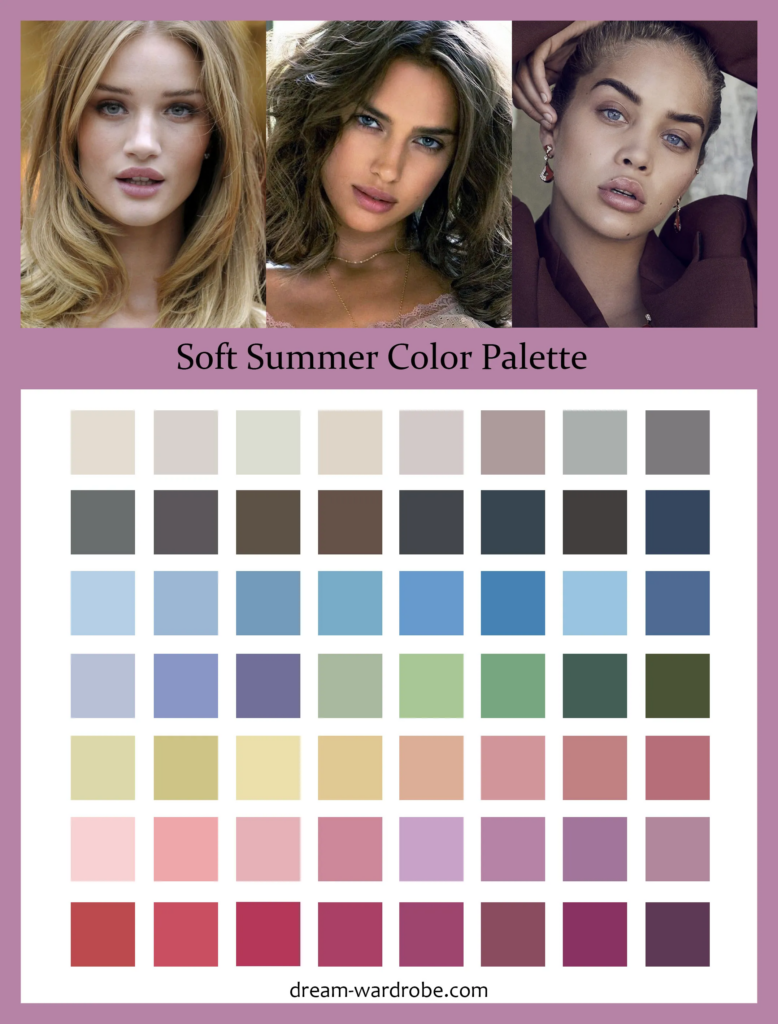
Dream Wardrobe [2]
- Cool + Medium + Medium = True Summer
- Your colour palette
- Best colours: Cool navy, raspberry, soft teal, lavender.
- Avoid: Warm earth tones like rust, mustard, or olive.
- Cool + Deep + High = Deep Winter
- Your colour palette
- Best colours: Black, deep emerald, royal blue, burgundy.
- Avoid: Soft pastels, muted tones, and anything overly warm.
- Cool + Medium/Deep + Medium = True Winter
- Your colour palette
- Best colours: Icy blue, fuchsia, crisp white, charcoal.
- Avoid: Warm browns, orange, or any muted, soft colours.
- Cool + Light/Medium + High = Bright Winter
- Your colour palette
- Best colours: Cobalt blue, cherry red, icy pink, electric brights.
- Avoid: Dusty, soft, or earthy tones.
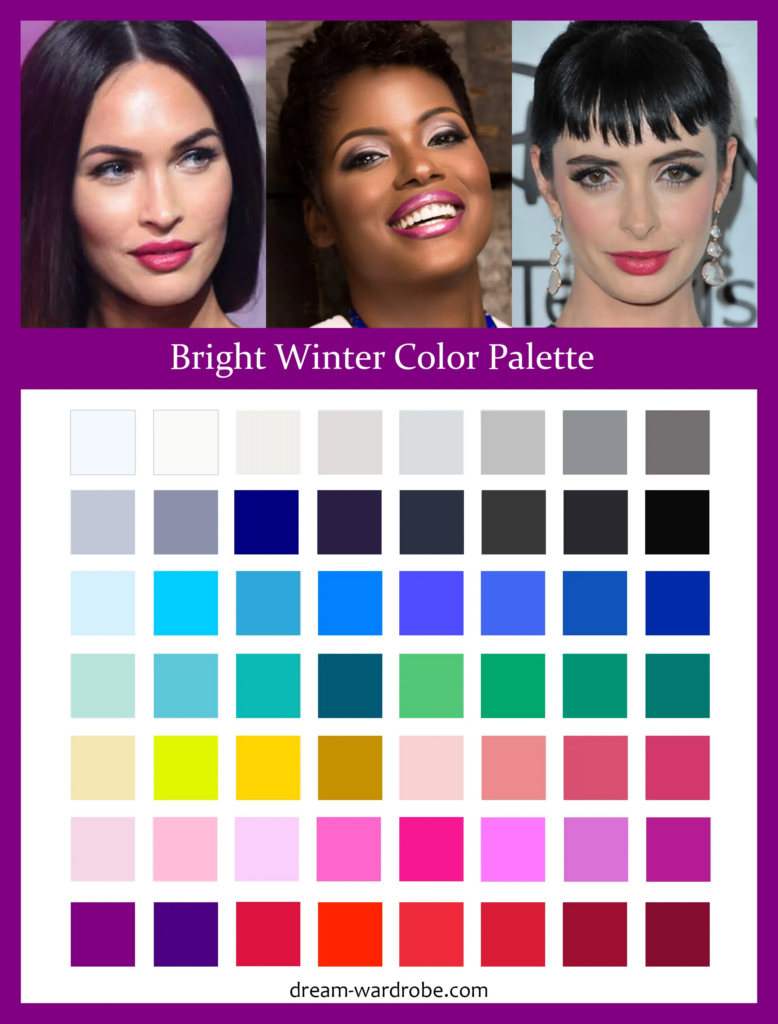
Dream Wardrobe [3]
Warm undertones
- Warm + Light + Medium = Light Spring
- Your colour palette
- Best colours: Peach, light coral, butter yellow, mint green.
- Avoid: Heavy dark shades, cool greys, or icy tones.
- Warm + Light/Medium + High = Bright Spring
- Your colour palette
- Best colours: Bright coral, turquoise, lime, warm pink.
- Avoid: Muted, dusty colours or anything too soft.
- Warm + Medium + Medium = True Spring
- Your colour palette
- Best colours: Warm green, clear orange, golden yellow, aqua.
- Avoid: Cool tones like blue-grey, icy pastels, or burgundy.
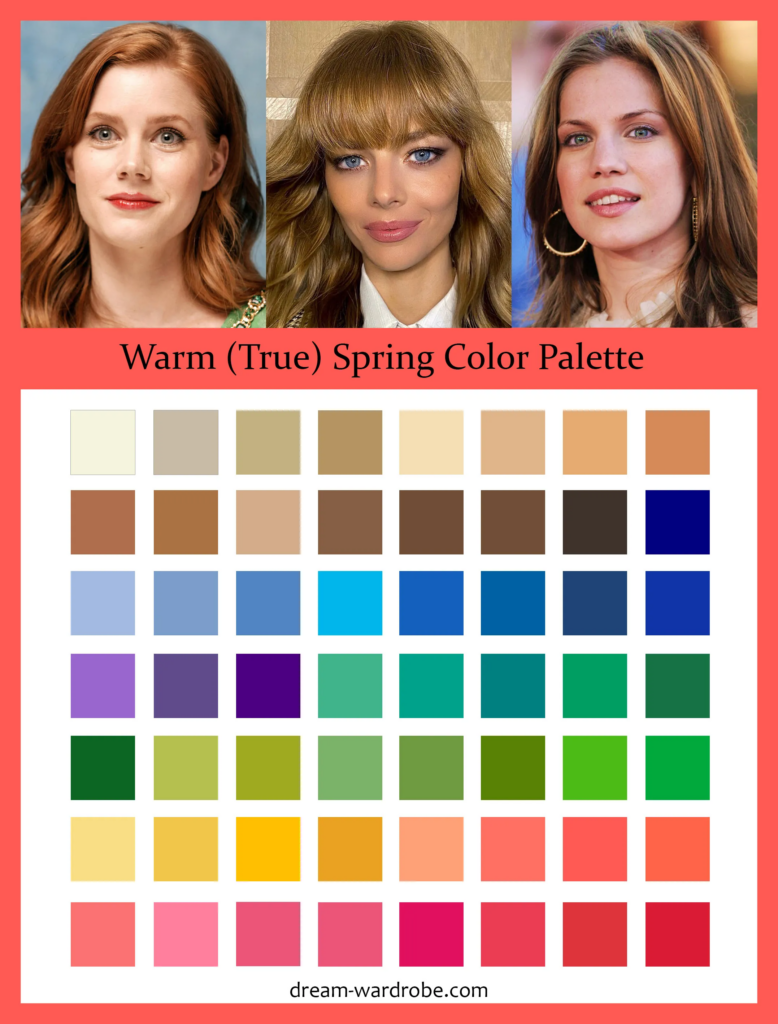
Dream Wardrobe [4]
- Warm + Medium + Low = Soft Autumn
- Your colour palette
- Best colours: Sage, soft terracotta, dusty olive, muted gold.
- Avoid: Bright or icy colours, cool blues, and greys.
- Warm + Deep + Low = Deep Autumn
- Your colour palette
- Best colours: Mahogany, forest green, deep olive, burnt orange.
- Avoid: Pale pastels, icy tones, and high-contrast combos.
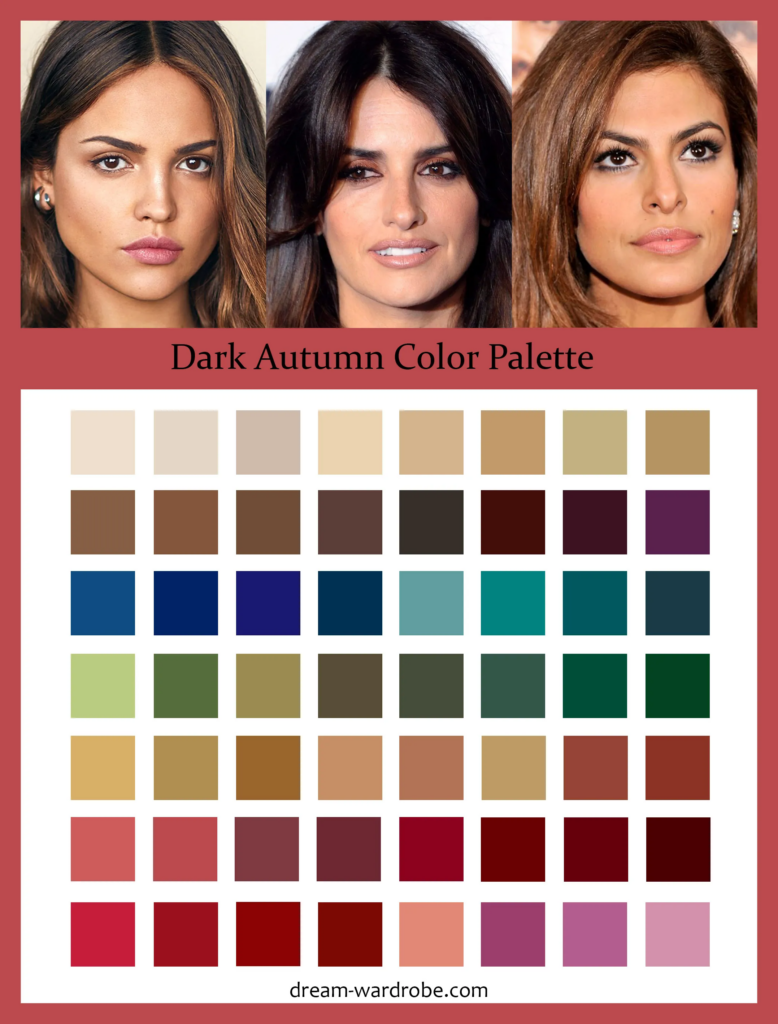
Dream Wardrobe [5]
- Warm + Medium/Deep + Medium = True Autumn
- Your colour palette
- Best colours: Rust, mustard, camel, olive green.
- Avoid: Cool tones, black, icy shades, or neon brights.
Common misconceptions
Here are a few common misconceptions to be aware of.
But I love wearing [insert colour that isn’t on your palette]!
That’s fine. You can still wear colours that you love, but to get the most out of your natural beauty, try to pair them with something that is in your palette.
I look good in black, so I must be a Winter
Not necessarily. Black is stylish and dramatic, but that doesn’t mean it’s your most flattering shade. It can still dull your features if it’s not aligned with your season. An easy swap for black is dark brown.
I’m not quite cool or warm – where do I fit?
If you aren’t quite cool or warm, you might be neutral. If you’re truly neutral, you will lean toward the summer or winter season. These palettes sit closer to the middle and offer a balanced mix of tones that won’t overwhelm your features.
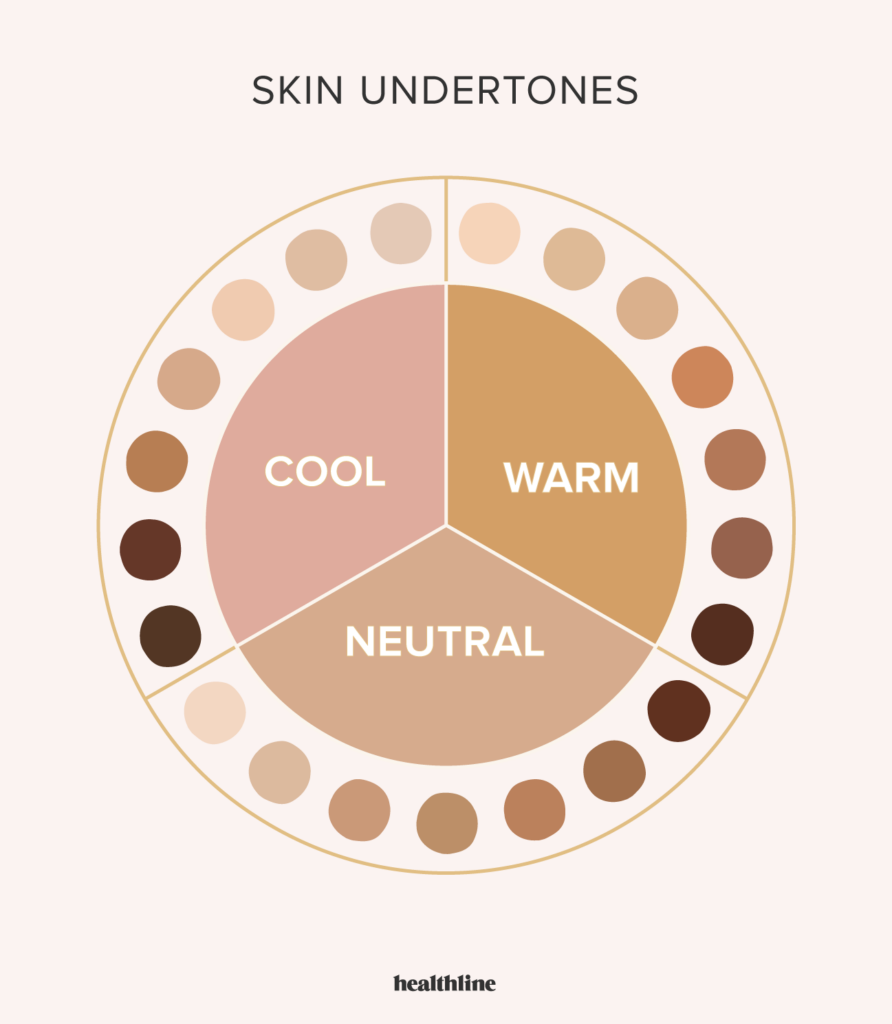
Healthline [6]
Can I use my skin colour to identify if I’m cool or warm?
No, because skin colour isn’t the same as undertone. People of all skin colours can be warm, cool, or neutral. It’s about the subtle tones underneath, not how light or dark your skin is.
What if I’ve dyed my hair?
Hair dye can change how certain colours look on you, but your undertone and natural contrast will stay the same. Try to assess yourself based on your natural colouring if you can.
Can men use colour seasons?
Yes, 100%. Colour theory isn’t gendered. Men can benefit just as much from wearing colours that make their skin look brighter and their features sharper. It makes their style feel more intentional.
Colour palette inspiration from celebrities
Celebrities can be a great source of colour inspiration, helping you identify what might look good on you. Here’s a quick look at how some well-known stars match their seasons.
- Light Summer: Margot Robbie often wears soft pastels like powder blue and lavender, which complement her cool undertones.
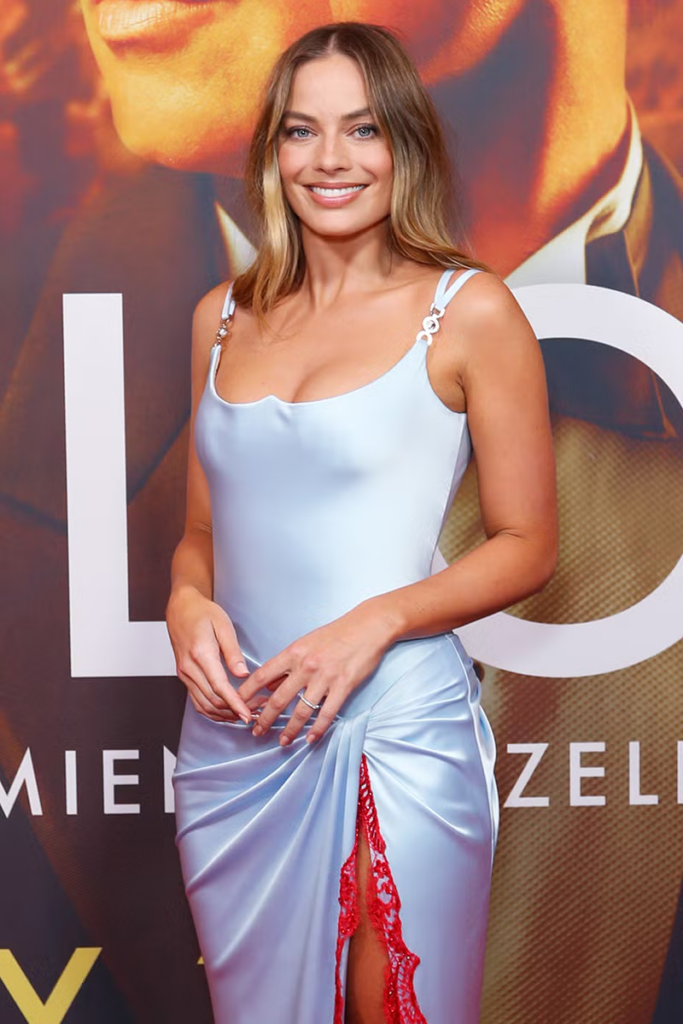
Women’s Health [7]
- Soft Summer: Gwyneth Paltrow shines in muted tones like dusty rose and sage, flattering her light, cool features.
- True Summer: Margaret Qualley is a True Summer, often rocking cool shades like dusty rose and soft teal.
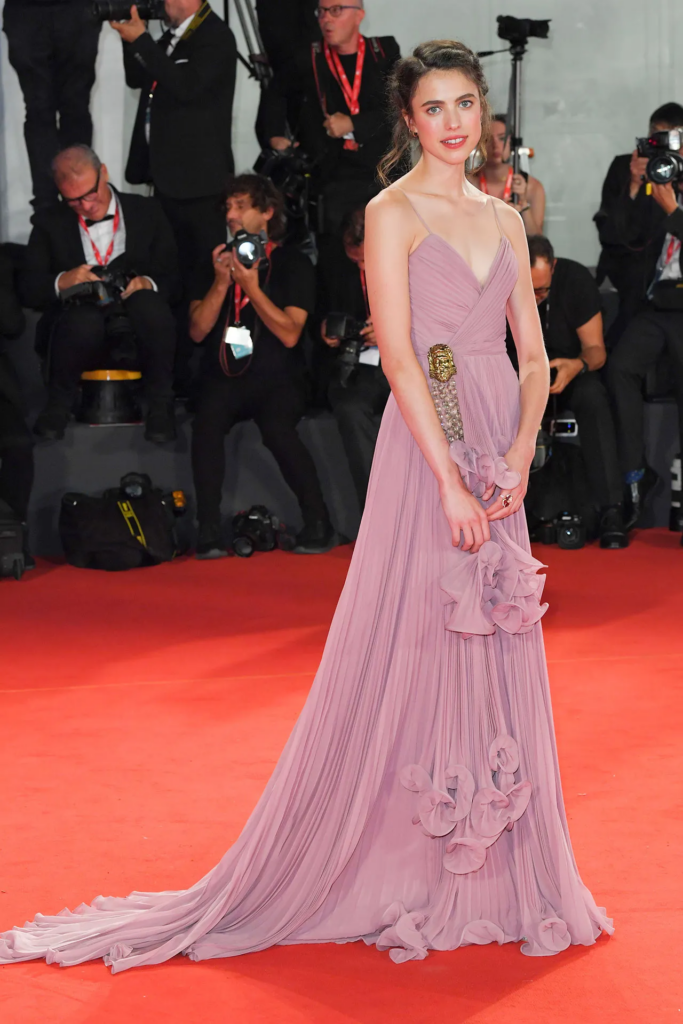
Vogue [8]
- True Winter: Anna Kendrick embraces icy blues and bright whites, perfect for her cool undertones and high contrast.
- Bright Winter: Taylor Swift stands out in bright shades like cobalt blue and cherry red.
- Deep Winter: Rihanna effortlessly wears deep, bold colours like emerald green and deep purple.
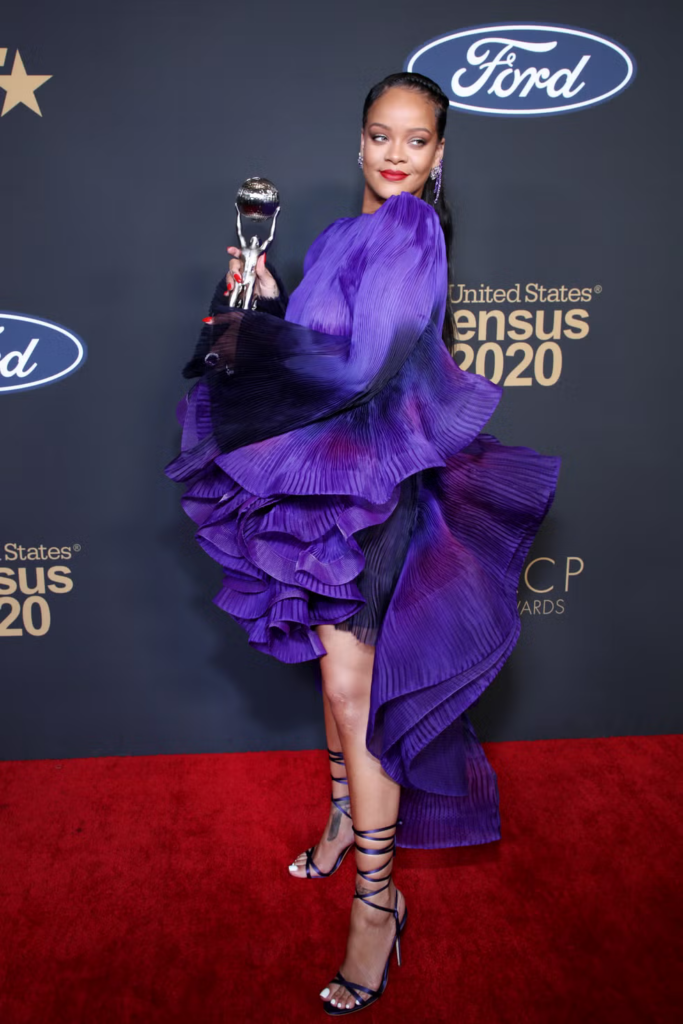
Harper’s Bazaar [9]
- Light Spring: Reese Witherspoon looks radiant in soft, warm hues like peach and mint green.
- Bright Spring: Blake Lively wears lively colours like bright coral and turquoise with her warm undertones.
- True Spring: Jessica Chastain shines in vibrant shades like golden yellow and bold pink.
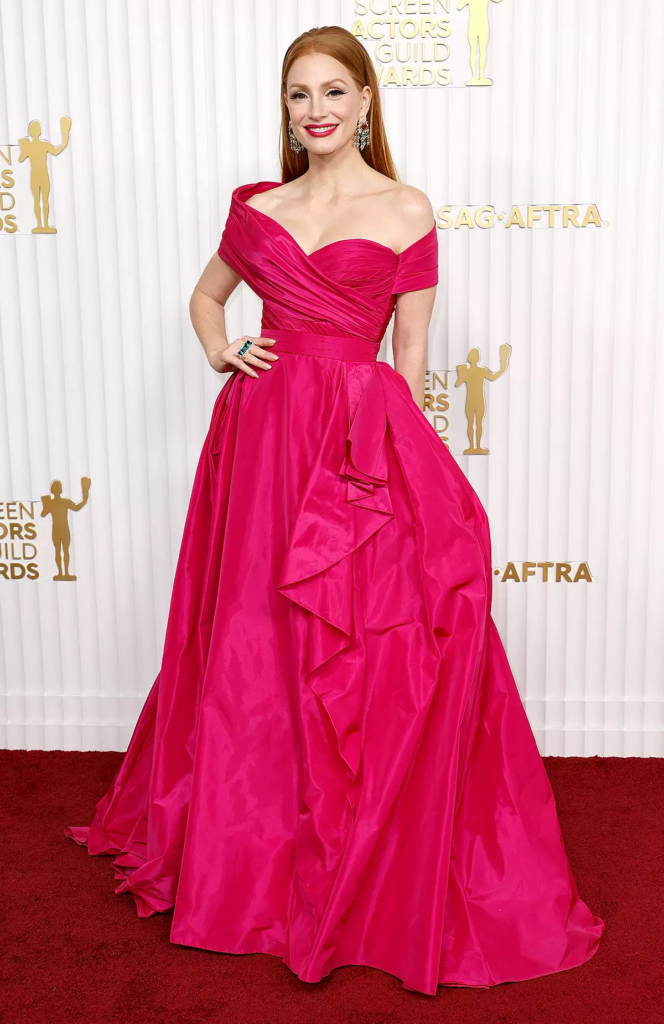
People [10]
- Soft Autumn: Olivia Wilde embraces earthy tones like soft terracotta and muted gold.
- Deep Autumn: Sofia Vergara looks stunning in deep, rich colours like forest green and burnt orange.
- True Autumn: Emma Watson wears warm, earthy hues like orange and mustard to complement her features.
Celebrities often work with personal stylists who help them choose colours that complement their season, making them a fantastic and cost-effective source of style inspiration!
Summing up
Understanding your colour season is key to building a wardrobe that flatters you year-round.
By identifying your undertone, depth, and contrast, you can choose colours that enhance your natural beauty.
Once you know your perfect shades, all that’s left is to make sure your clothes fit just right. Head to LookSmart Alterations, where our expert tailors can ensure your wardrobe complements both your colour and fit. Find your nearest LookSmart Alterations store here.
FAQs
Can I wear colours outside my season?
Absolutely! While your seasonal palette will likely highlight the colours that best complement your features, you can still wear other colours you love. Just be mindful of how they interact with your skin and try pairing them with shades from your palette to ensure a harmonious look. You can build your wardrobe staples on your seasonal palette, and add flair with other colours you love.
What colours are best for cool undertones?
Cool undertones tend to look best in colours like cool blues, purples, emerald green, and true red. Soft and icy shades are also flattering.
How can I incorporate my colour palette into my wardrobe?
Once you know your colour season, focus on incorporating those colours into your wardrobe. Start with key pieces like tops, accessories, and outerwear. You can mix and match colours from your palette to create a cohesive look that always flatters you.
Sources
[1] Spice Market Colour: 4 Become 12. Sourced 2021.
[2] Dream Wardrobe: Soft Summer Color Palette and Wardrobe Guide. Sourced 2023.
[3] Dream Wardrobe: Bright Winter Color Palette and Wardrobe Guide. Sourced 2023.
[4] Dream Wardrobe: Warm True Spring Color Palette and Wardrobe Guide. Sourced 2023.
[5] Dream Wardrobe: Dark Autumn Color Palette and Wardrobe Guide. Sourced 2023.
[6] Healthline: Skin Undertones: How to Determine Yours. Sourced 2023.
[7] Women’s Health: Margot Robbie Stuns in a Blue Versace Dress. Sourced March 2023.
[8] Vogue: Margaret Qualley’s Best Dresses. Sourced March 2023.
[9] Harper’s Bazaar: Rihanna’s Best Street Style Moments. Sourced 2023.
[10] People: Jessica Chastain’s Best Red Carpet Looks at the 2023 SAG Awards. Sourced 2023.
[11] E! Online: Has Emma Watson Flipped Into a Total Fashion Rebel? 7 Looks Suggest the Answer Is Yes. Sourced 2014.


